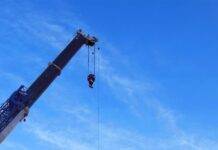
How to Calculate Dead Load and Live Load of Scaffold with Practical Examples
How to Calculate Dead Load and Live Load of Scaffold : Scaffolding plays a crucial role in construction and maintenance work, providing a safe and stable platform for workers to perform various tasks at elevated heights. To ensure the safety and structural integrity of scaffolds, it’s essential to calculate the dead load and live load accurately. In this article, we will guide you through the process of calculating these loads with practical examples, ensuring a deeper understanding of this vital aspect of construction.
1. Understanding Dead Load
The dead load of a scaffold refers to the static or permanent weight that it must support. This includes the weight of the scaffold structure itself, as well as any permanent fixtures or equipment attached to it.
2. Components of Dead Load
Components of dead load can include scaffold frames, platforms, guardrails, and any other fixed elements. It’s crucial to consider the weight of each component accurately.
3. Dead Load Calculation
To calculate the dead load, sum up the weights of all the scaffold components. Ensure you account for any variations in materials or configurations that might affect the load.
4. Understanding Live Load
Live load represents the dynamic or temporary weight that the scaffold will bear during its use. This includes the weight of workers, tools, materials, and any other loads that change as work progresses.
5. Components of Live Load
Components of live load can vary greatly depending on the specific job. It’s essential to consider the maximum expected live load to ensure the scaffold’s safety.
6. Live Load Calculation
Calculate the live load by estimating the maximum weight that the scaffold will carry during its use. This involves considering the number of workers, equipment, and materials that will be present.
7. Practical Example 1: Calculating Dead Load
Let’s say we have a scaffold with frame sections weighing 50 pounds each, platforms weighing 30 pounds each, and guardrails weighing 20 pounds each. To calculate the dead load, use the formula:
Dead Load = (Number of Frames × Weight per Frame) + (Number of Platforms × Weight per Platform) + (Number of Guardrails × Weight per Guardrail)
8. Practical Example 2: Calculating Live Load
Suppose you expect four workers, each weighing 180 pounds, along with tools and materials weighing a total of 1000 pounds. To calculate the live load, use the formula:
Live Load = (Number of Workers × Weight per Worker) + Weight of Tools and Materials
9. Ensuring Scaffold Safety
Accurate load calculations are crucial for ensuring the safety of both workers and the scaffold structure itself. Overloading a scaffold can lead to accidents and structural failures.
10. Factors Affecting Load Calculations
Factors such as weather conditions, wind speed, and the type of work being performed can affect load calculations. Always reassess the loads if conditions change.
11. Common Mistakes to Avoid
Avoid common mistakes such as underestimating the live load or neglecting to account for changes in the scaffold’s configuration during work.
12. Regular Inspections
Regularly inspect the scaffold for signs of wear and tear, damage, or structural issues. Any problems should be addressed promptly to maintain safety.
13. Conclusion
Calculating the dead load and live load of a scaffold is a critical aspect of construction safety. By following the guidelines and examples provided in this article, you can ensure that your scaffolding is both safe and structurally sound.
How to Calculate SWL of Scaffold with Practical Examples
How to Calculate Severity Rate with Practical Example
How to Calculate Incident Rate with Practical Example
How to Calculate Frequency Rate with Practical Example
How to Calculate Crane Load Capacity Without a Load Chart
14. Frequently Asked Questions
1. What happens if I miscalculate the load on a scaffold?
- Miscalculating the load can lead to accidents, scaffold collapse, and serious injuries. Always ensure accurate load calculations.
2. Are there industry standards for scaffold load calculations?
- Yes, there are industry standards and guidelines that provide specific load limits for different types of scaffolds and configurations.
3. Can the load on a scaffold change during a job?
- Yes, the load on a scaffold can change as work progresses. It’s essential to regularly reassess and adjust load calculations accordingly.
4. How often should I inspect a scaffold for safety?
- Scaffolds should be inspected before each work shift and regularly throughout the job to ensure ongoing safety.
5. Where can I find more information on scaffold safety and load calculations?
- You can refer to safety regulations and guidelines from relevant authorities and organizations for comprehensive information on scaffold safety.
In conclusion, understanding and correctly calculating the dead load and live load of a scaffold are fundamental for a safe and successful construction project. By following the steps and examples outlined in this article, you can ensure that your scaffold is both structurally sound and capable of supporting the dynamic loads it will encounter during its use. Always prioritize safety when working with scaffolding.
























